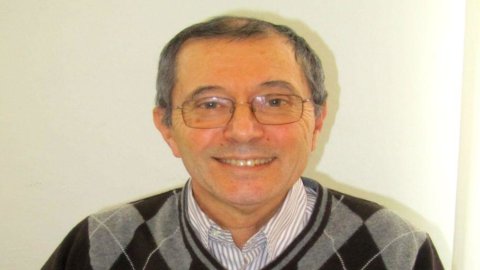After the visionary recklessness of Warhol, the "Irascibili" arrive in Rome of Scu di New Y, that group of artists of the Action Painter who in 1950 revolutionized the world of American art by bursting onto the cultural scene with their disruptive and irreverent charge of nonconformity. A real revolt which divided the American art world to the point that the Metropolitan Museum di New Y, with little foresight about the future of art, came to exclude them from an important exhibition of contemporary art arousing large
So here they are on display up to 24 February altheWing Brazilians of the Victorian, with Jackson Pollock in the lead, the founder of Action Painting, superstar of American painting of those years to whom the magazine "Life", already in 1949, had dedicated a long post-sales service in the central pages wondering if he was the most important living American artist. And with Pollock of which the famous Number is exhibited for the first time 27, the large canvas over 3 meters long extraordinary synthesis of abstract expressionism among the brushstrokes of black elfusion dlight colors, which alone justifies a visit to the Mostra del Vittoriano, appear in exposure 50 masterpieces of mark rothko, Willem de Kooning, Franz Kline, William Baziotes, David Smith, Lenore Krasner, Pollock's muse and companion forced to change the first name to Lee (looks amazing in the 50s but that's how it is) to remedy the gender discrimination rooted in the art system and appearing as a male painter, and others, which offer an overall look at the climate of those years in which the New York School imposed on the world abstract expressionism like indelible sign of modern pop culture, a combination of expressiveness of form and stylistic abstraction, which significantly influenced all the 50s.
action painting it is therefore innovation, transformation, breaking from the mold and from the past. The exhibition which aims to make the public discover not only the charm of this movement through art but above all di far reliving the emotions and feelings of those artists who made an era of art history unique is based on one of the cores more import anti from the collection of Whitney Museum in New York. A museum that has played a defining role in the history of modern American art. He founded it in 1931, therefore immediately after the great depression of '29, Gertrude Vanderblit Whitney (1875-1942), patron of the arts, wealthy heiress and collector, with the purpose of supporting living American artists not yet consecrated by critics and the market. Fundamental institution for the emergence of a new contemporary sensibility, different from the model of the MoMA, still Eurocentric and attracted by the masters ofthe historical avant-gardes. Andto 1955 the Whitney Museum strengthened even more the procurement policy, its to respond to the failed merger with the Metropolitan, of which a wing should have been dedicated to new American art.
The critics defined it an “empty container”, but actually the New York School found you a moment of cohesion in which the artists argued,
parlavano, writeEveno Yes they gathered e they went together
Frank Pearls Gallery in Beverly Hills in Los Angeles, to underline the catalytic force of Manhattan in the early XNUMXs.
The most significant episode that produced that image that has become a true symbol of American art is the photograph of Nina Leen which appeared in January 1951 in "Life" and exhibited on a large panel at the Vittoriano: fifteen artists, Hedda Sterne is the only woman, “dressed as bankers”, posed to show their strength and their cohesion against the Metropolitan Museum which did not include the Abstract Expressionists of exhibition of contemporary American art. A somewhat singular way of contesting the decision, anticipated by the letter published in the "New York Times" in May 1950 which collects
eighteen signatures. The shot therefore identifies the Short-tempered, despite the so civil form underlined by formal clothes, where the protagonists (Pollock in the center, Newman, Rothko, Motherwell, De Kooning) are together with the supporting actors. The appearance is good-natured yet they are technically angry about this isolated condition, which nevertheless puts them in a rather typical situation in the times of the avant-garde: to make a common front, to work together, to share successes and difficulties in a compact way. From Greenwich Village, the neighborhood where they gather, a loud voice is raised on the difficult relationship between artists and institutions, even if we are in America, the country of the new. A country where change, not to mention the generational split, is underway and will never stop for a long time, starting right from 1950, the year of the Irascibles, in fact. Andin Pittsburgh, Andy
Warhol moved permanently under the Empire State Building, works as an illustrator and window dresser waiting to develop the strategy that will lead him to become the most important artist of the following decade.





